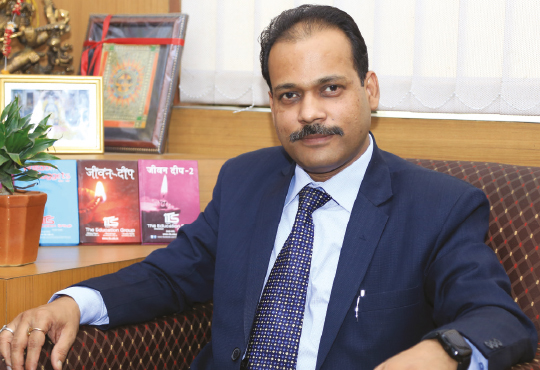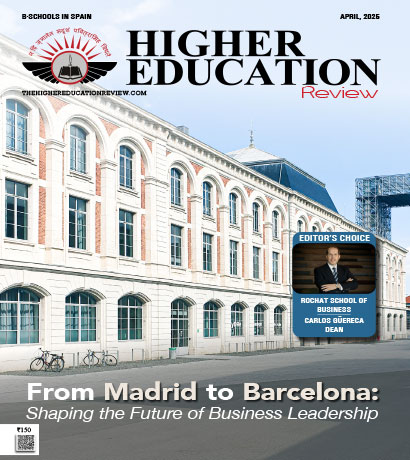Higher Education in India: Passing through a Transformational Stage

Dr. Sunil Kr Pandey, Director (IT), Institute of Technology & Science
India is a young nation, and an engine to world economic growth, about 125 million, the world's second-largest English speaking nation, after the USA. Today, India's population pyramid offers its 1.3+ billion people, 'a Window of opportunity', 'a 25-Years demographic advantage with a median age of 27.9 years', which amounts to be more than 50 percent of total population. Birthrates are declining but more people are entering the workforce than ever before and the ratio of workers to dependent is lower than any time before in the last century. India's working age population is expected to rise from 699 Million (62.9 percent in 2006) to 957 Million (68.4 percent in 2026), while its number of middle or higher income households will increase from 7 to 49 million in the same time frame.
In combination, India's economy and the aspiration of India's middle-class section are creating a huge new demand for skills and quality higher education. This growing internal demand is why India has become a major source area for International learners with more than 1,60,000 students studying abroad every year, principally in the Universities of the USA. The reason is that India's recruitment into HE, its GER (Gross Enrolment Ratio) is quite low, just 10.12 percent and far below than the world's average (24 percent). Meanwhile, recent years have seen the tremendous growth in the HE Institutions in India, especially, Private Institutions, which now sign up about 30 percent of all enrollments.
"The evolution of Information Technology (IT) and IT-enabled tools are challenging heavily to the conventional teaching-learning mechanisms and frameworks"
The education system is considered to be the backbone of growth, prosperity, and success of any nation and so with our nation too. In fact, the Indian education system, from school to Higher Education set up is currently going through a phase of change, transformation and creating a globally competitive framework to make it more relevant, sustainable and deliver as per changing requirements, expectations and to keep it learner-centric.
Though the education system is evolving and attempting to come out of conventional hitches, however the most important challenge before the academic institutions are to make classrooms engaging, a happening place which is full of learning rather than monotonous kind of teacher's centric conventional approach. The evolution of Information Technology (IT) and IT-enabled tools are challenging heavily to the conventional teaching-learning mechanisms and frameworks. The technology and fast-changing requirements are posing a big challenge to adopt a mechanism and teaching-learning pedagogy which is Industry-oriented, practical and application based which can help the students in increasing their understanding of concepts, link with actual requirements and employability.
The Solution
These requirements are necessitating the need for continuous skilling and re-skilling to match the changing and upcoming requirements. Here the role of faculty is very important and there is a strong need of keeping a close watch on latest requirements and finding solutions to the issues to resolve them. Such requirements need a built-in mechanism in the education system itself where the system itself regulates and faculty has avenues to upgrade themselves, get involved into research, take the research outcomes to the classes and make classrooms challenging, students are encouraged to think about it, plan and present their perspective.
The technology, Information Technology, in particular, has revolutionized the way academic institutions have been operating and running weather content delivery, teaching-learning pedagogies, classroom management, academic management and administration and literally has transformed in an unprecedented way. All the geographical and physical are disappearing very fast and a new era of sharing of knowledge, views, and work is opened. People working across the world are now able to exchange their ideas for Research, Innovation, and creativity to make it more relevant on a global perspective.
The technology enabled tools like Video (streaming and live), Learning Management Systems, Collaborative Platforms (for group or remote discussions and sharing and exchange of knowledge, work and ideas), Data Visualization have equipped students and educators with plethora of tools which is becoming very important in imparting quality, relevant and focused teaching-learning environment. And I am sure these developments and a positive sign of its acceptance by Educational Institutions and its stakeholders give the ray of hope that, though we have to go a long way to improve upon; however, we are marching in the right direction to ensure our co-existence in global competitive place.
It may take some time to identify and address the issues of concern, ensure consistent efforts towards improvement in the quality of academic institutions and the quality of education which is relevant in the context, but I am very optimistic that things have started accepting and putting its effort towards improvement. We will see these results in near future.
Dr. Sunil Kr Pandey, Director (IT)
With over 21+ years of experience with I.T.S, Ghaziabad as a Professor and Director, Dr. Sunil Kr Pandey is trained on OBE (Outcome-based Evaluation) by NBA for Washington Accord. A Ph.D. holder in computer science, Dr. Pandey also holds MCA and M.Tech degrees. He has been awarded among Top 50 Most Innovative CIO/ CTOs Award of India - 2017.
In combination, India's economy and the aspiration of India's middle-class section are creating a huge new demand for skills and quality higher education. This growing internal demand is why India has become a major source area for International learners with more than 1,60,000 students studying abroad every year, principally in the Universities of the USA. The reason is that India's recruitment into HE, its GER (Gross Enrolment Ratio) is quite low, just 10.12 percent and far below than the world's average (24 percent). Meanwhile, recent years have seen the tremendous growth in the HE Institutions in India, especially, Private Institutions, which now sign up about 30 percent of all enrollments.
"The evolution of Information Technology (IT) and IT-enabled tools are challenging heavily to the conventional teaching-learning mechanisms and frameworks"
The education system is considered to be the backbone of growth, prosperity, and success of any nation and so with our nation too. In fact, the Indian education system, from school to Higher Education set up is currently going through a phase of change, transformation and creating a globally competitive framework to make it more relevant, sustainable and deliver as per changing requirements, expectations and to keep it learner-centric.
Though the education system is evolving and attempting to come out of conventional hitches, however the most important challenge before the academic institutions are to make classrooms engaging, a happening place which is full of learning rather than monotonous kind of teacher's centric conventional approach. The evolution of Information Technology (IT) and IT-enabled tools are challenging heavily to the conventional teaching-learning mechanisms and frameworks. The technology and fast-changing requirements are posing a big challenge to adopt a mechanism and teaching-learning pedagogy which is Industry-oriented, practical and application based which can help the students in increasing their understanding of concepts, link with actual requirements and employability.
The Solution
These requirements are necessitating the need for continuous skilling and re-skilling to match the changing and upcoming requirements. Here the role of faculty is very important and there is a strong need of keeping a close watch on latest requirements and finding solutions to the issues to resolve them. Such requirements need a built-in mechanism in the education system itself where the system itself regulates and faculty has avenues to upgrade themselves, get involved into research, take the research outcomes to the classes and make classrooms challenging, students are encouraged to think about it, plan and present their perspective.
The technology, Information Technology, in particular, has revolutionized the way academic institutions have been operating and running weather content delivery, teaching-learning pedagogies, classroom management, academic management and administration and literally has transformed in an unprecedented way. All the geographical and physical are disappearing very fast and a new era of sharing of knowledge, views, and work is opened. People working across the world are now able to exchange their ideas for Research, Innovation, and creativity to make it more relevant on a global perspective.
The technology enabled tools like Video (streaming and live), Learning Management Systems, Collaborative Platforms (for group or remote discussions and sharing and exchange of knowledge, work and ideas), Data Visualization have equipped students and educators with plethora of tools which is becoming very important in imparting quality, relevant and focused teaching-learning environment. And I am sure these developments and a positive sign of its acceptance by Educational Institutions and its stakeholders give the ray of hope that, though we have to go a long way to improve upon; however, we are marching in the right direction to ensure our co-existence in global competitive place.
It may take some time to identify and address the issues of concern, ensure consistent efforts towards improvement in the quality of academic institutions and the quality of education which is relevant in the context, but I am very optimistic that things have started accepting and putting its effort towards improvement. We will see these results in near future.
Dr. Sunil Kr Pandey, Director (IT)
With over 21+ years of experience with I.T.S, Ghaziabad as a Professor and Director, Dr. Sunil Kr Pandey is trained on OBE (Outcome-based Evaluation) by NBA for Washington Accord. A Ph.D. holder in computer science, Dr. Pandey also holds MCA and M.Tech degrees. He has been awarded among Top 50 Most Innovative CIO/ CTOs Award of India - 2017.

